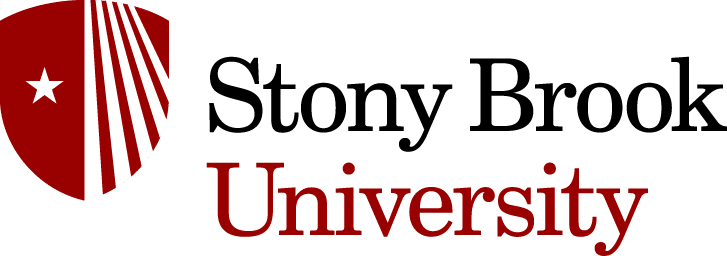The Top Priorities of Healthcare Employee Training Programs Today
Within the healthcare landscape, the pressure on systems and staff has never been more intense. From the heroic frontlines of pandemics to the contemporary challenges of staffing shortages and an increased demand for flexible, yet thorough, training methods, healthcare organizations must adapt and innovate to thrive. This is where the integration of new healthcare employee training programs becomes not just an option but a necessity.


A Call for Modern Methods
It’s becoming increasingly apparent that the traditional approaches to healthcare employee training programs are no longer sustainable. Limited classroom sessions, outdated paper materials, and the absence of dynamic, digital resources impede the progress that healthcare workers so desperately require. These antiquated methods have led to inefficient onboarding, a lack of engagement among staff, and difficulty in retaining essential information critical for high-quality patient care.
The Arrival of New Training Programs
To address the gap, pioneering healthcare employee training programs have emerged, offering solutions that align with the current state of healthcare and the expectations of its workforce. These innovative programs are tailored to meet the enhanced needs of an industry that is always on its toes, prioritizing speed, efficiency, and, most importantly, the adaptability of training efforts.
Harnessing the Power of Technology
With advancements in technology at our fingertips, these modern training programs integrate mobile access, catering to on-the-go learning for busy healthcare professionals. Real-time tracking and interactive functionalities facilitate better monitoring of training completions and comprehension, streamlining processes that once ate into valuable clinical time.
This integration of leading-edge technology is not just about convenience; it’s about improving outcomes. By adopting these novel training methodologies, healthcare organizations provide their staff with the tools necessary for continuous improvement and growth, which ultimately translates to better patient care.
Fast, Efficient Yet Thorough Healthcare Employee Onboarding
Whether you’re onboarding new nurses, technicians, central supply, or facilities workers, getting employees up to speed on your organization and your processes is the key to delivering better patient care. Classroom-based, paper-based, or desktop-bound training won’t cut it.
Healthcare training programs give new employees access to onboarding content from a mobile device, so new hires can learn in the environment they’ll be working in day to day. Giving new hires the right balance between structured learning and quick-reference microlearning means they’ll retain information better and longer than information overload in longer training sessions.
Managers and supervisors also can see in real-time what training has been completed with notifications and alerts, and they can sign off on required training electronically. This keeps everyone effective on the job instead of spending time tracking down paperwork.
Easy, Collaborative, and Fast Training Healthcare Content Authoring
Most large healthcare systems need centralized design and control over content standards but this makes it challenging to collaborate with subject matter experts on healthcare learning and development materials. This was the situation at CHRISTUS Health when we first started working with them.
The healthcare employee development team wanted a faster and more collaborative way to create, keep, and maintain quality training content. With simplified content authoring from EchoInk, the team can ensure content standards are met while allowing subject matter experts to write and edit training materials.
Now over 50 content authors across multiple teams including talent development, clinical educators, and line of business teams create relevant, timely content for CHRISTUS Health employee training. And it’s done much faster than ever before.
A Digital Healthcare Knowledge and Learning Ecosystem
Disparate healthcare learning management systems only create blockades and silos of content that are often difficult for employees to access. What your employees need is a centralized, single source of truth—a digital knowledge and learning ecosystem.
This one-stop hub makes it easy for your team to create engaging digital learning content designed to be consumed at the nurses’ station, through workstations on wheels, or on mobile devices.

Employees can easily search for reference guides, quick refreshers, or in-depth content with Google-like functionality. Healthcare employee training can even include learning pathways to guide them through required training so both they and your organization can remain compliant. And because everything is digital and is tracked, you have powerful analytics that can continuously fuel your healthcare learning and development initiatives.
Actionable Steps for Healthcare Employee Training Implementation
To transition effectively to these advanced healthcare training programs, organizations can take the following practical steps:
- Conduct a Needs Assessment: Begin by evaluating your current training programs and identifying gaps. Understand the specific needs of your organization, staff, and the nature of healthcare services you provide.
- Select the Right Technologies: Choose technologies that are compatible with your needs. This may include mobile learning platforms, virtual reality simulations, or interactive e-learning modules.
- Engage in Partnership: Collaborate with tech providers who specialize in healthcare education. Their expertise can help tailor a program that’s right for your team’s needs.
- Train the Trainers: Ensure your in-house trainers are well-prepared to use these new tools. Consider offering special training sessions to get them up to speed.
- Pilot the Program: Before a full rollout, pilot your new training program with a small group of employees. Gather feedback and make necessary adjustments.
- Monitor and Evaluate: Once implemented, continuously monitor the program’s effectiveness through metrics such as employee engagement, retention rates, and performance improvements. Adjust the program as needed based on this data.
- Solicit Feedback: Regularly ask for feedback from your staff regarding the training’s relevance and usefulness in improving their skills and knowledge.
- Promote a Culture of Continuous Learning: Encourage your staff to see these new training programs as opportunities for personal and professional growth.
By taking these steps, healthcare organizations can ensure the successful implementation of modern training programs, leading to better patient care, improved staff retention, and a stronger, more efficient healthcare system.
Leading organizations and institutions are transforming learning with Echo360.






















